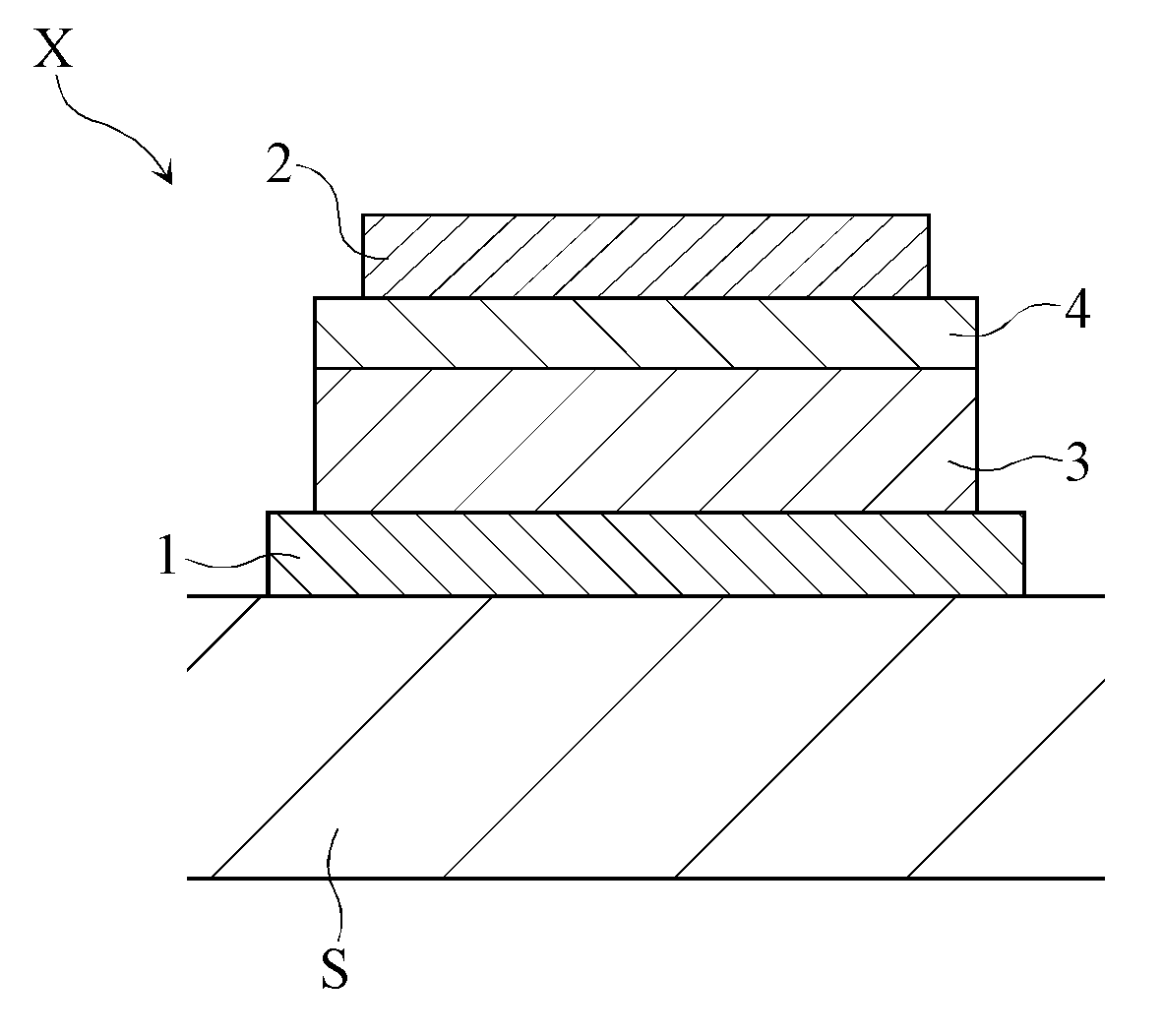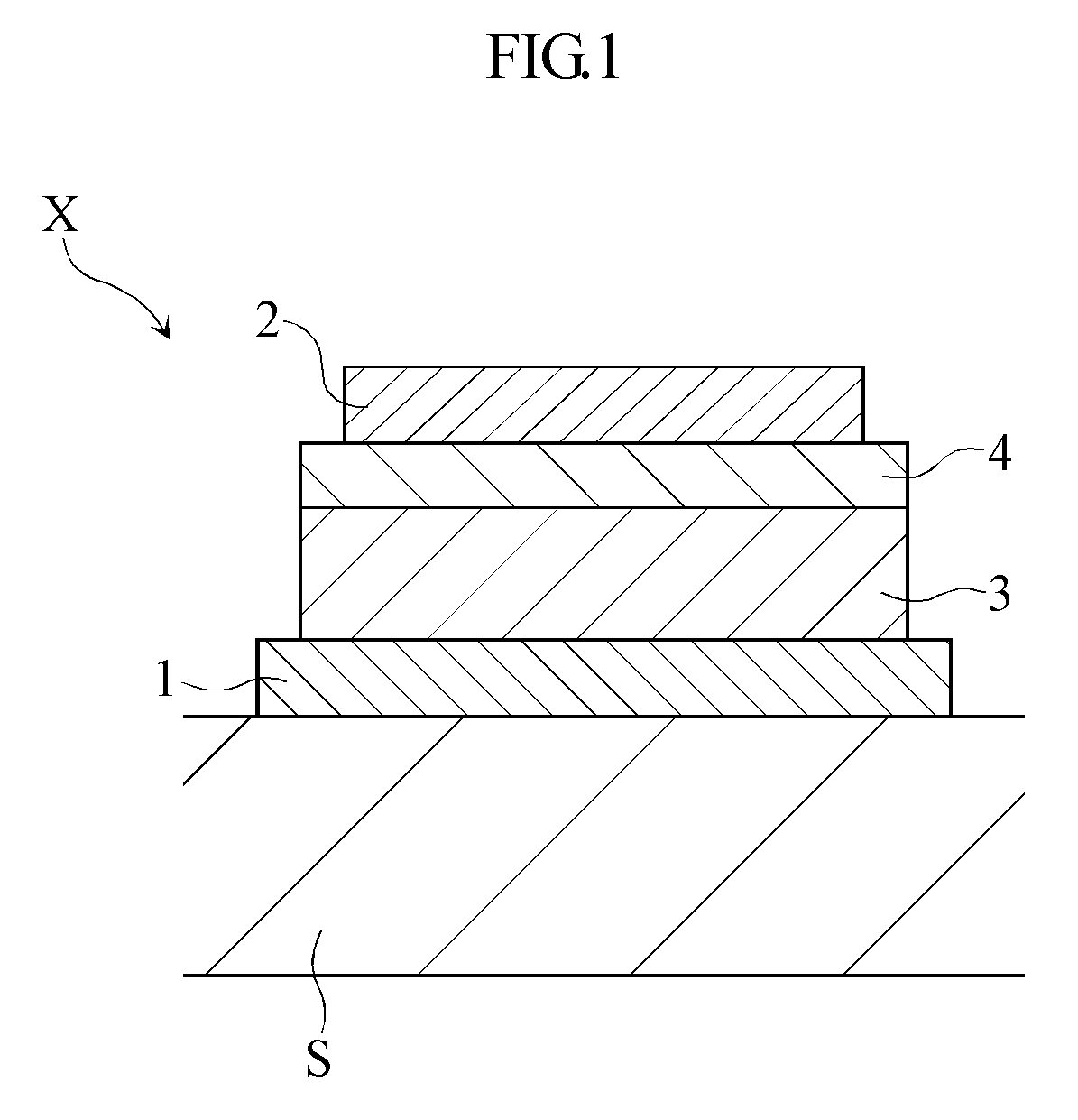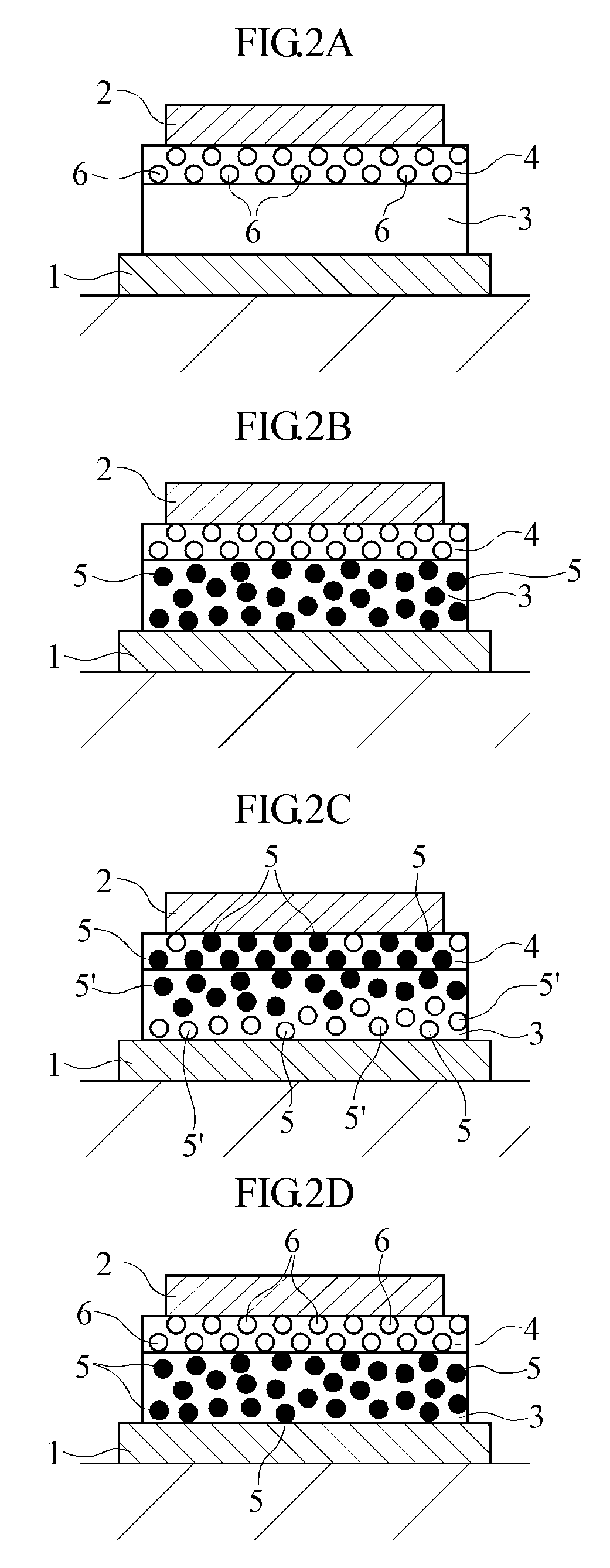Resistance variable element
a variable element and resistance technology, applied in the field of resistance variable elements, can solve the problems of difficult optimum design of the reram, unfigured mechanism of operation,
- Summary
- Abstract
- Description
- Claims
- Application Information
AI Technical Summary
Benefits of technology
Problems solved by technology
Method used
Image
Examples
example
Sample Element S1
[0082]A sample element S1 having the laminated structure illustrated in FIG. 4A was prepared as a resistance variable element. The facing area of the electrodes 1 and 2 of the sample element S1 is 31400 μm2. (The facing area of the paired electrodes of each of the sample elements S2-S12, which will be described later, is also 31400 μm2.) In the initial state before voltage application, the sample element S1 was in the low-resistance state.
[0083]The change of the resistance of the sample element S1 was examined. Specifically, while measuring the resistance between the electrodes 1 and 2 of the sample element S1, voltage application under the first condition and that under the second condition were repetitively performed with respect to the sample element S1. Specifically, under the first condition, a pulse voltage with a pulse amplitude of 5V and a pulse width of 10 nsec was applied across the electrodes, with the electrode 1 and the electrode 2 held negative and pos...
PUM
 Login to View More
Login to View More Abstract
Description
Claims
Application Information
 Login to View More
Login to View More - R&D
- Intellectual Property
- Life Sciences
- Materials
- Tech Scout
- Unparalleled Data Quality
- Higher Quality Content
- 60% Fewer Hallucinations
Browse by: Latest US Patents, China's latest patents, Technical Efficacy Thesaurus, Application Domain, Technology Topic, Popular Technical Reports.
© 2025 PatSnap. All rights reserved.Legal|Privacy policy|Modern Slavery Act Transparency Statement|Sitemap|About US| Contact US: help@patsnap.com



